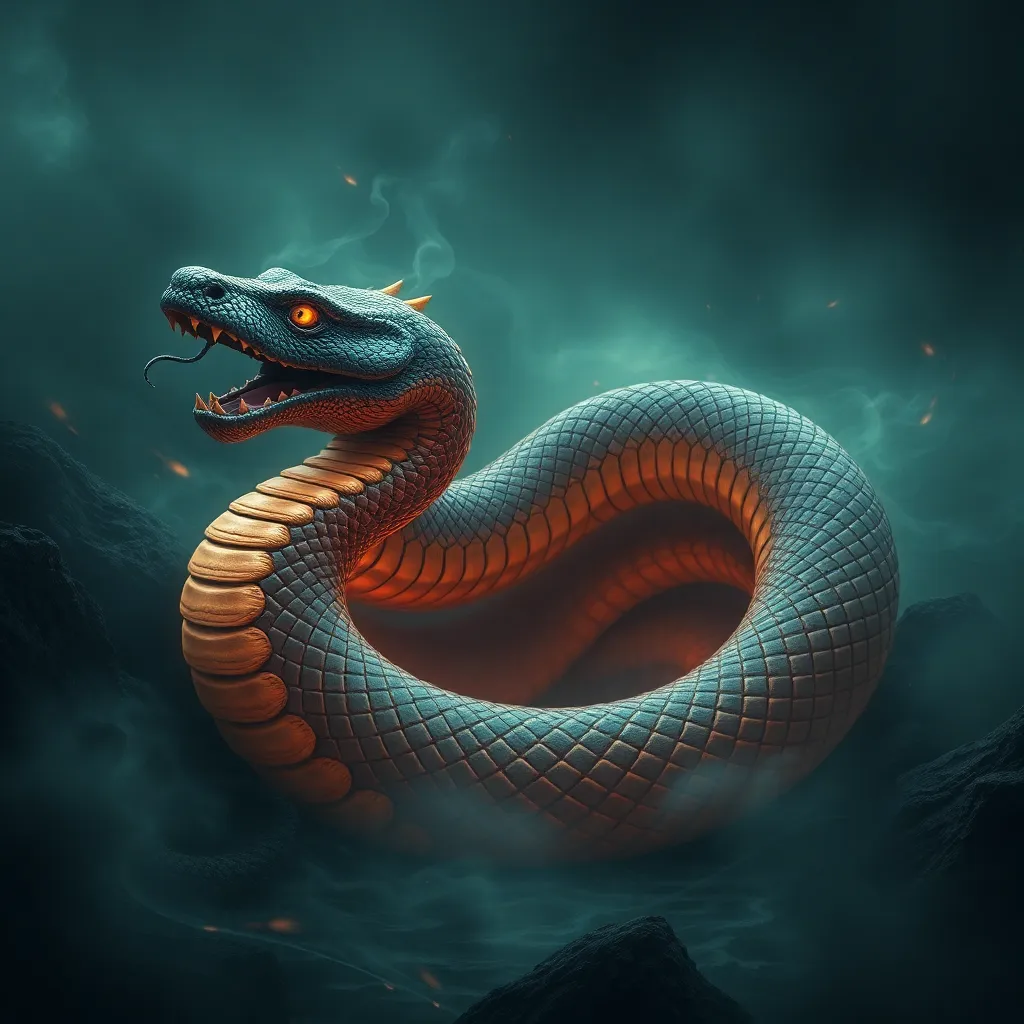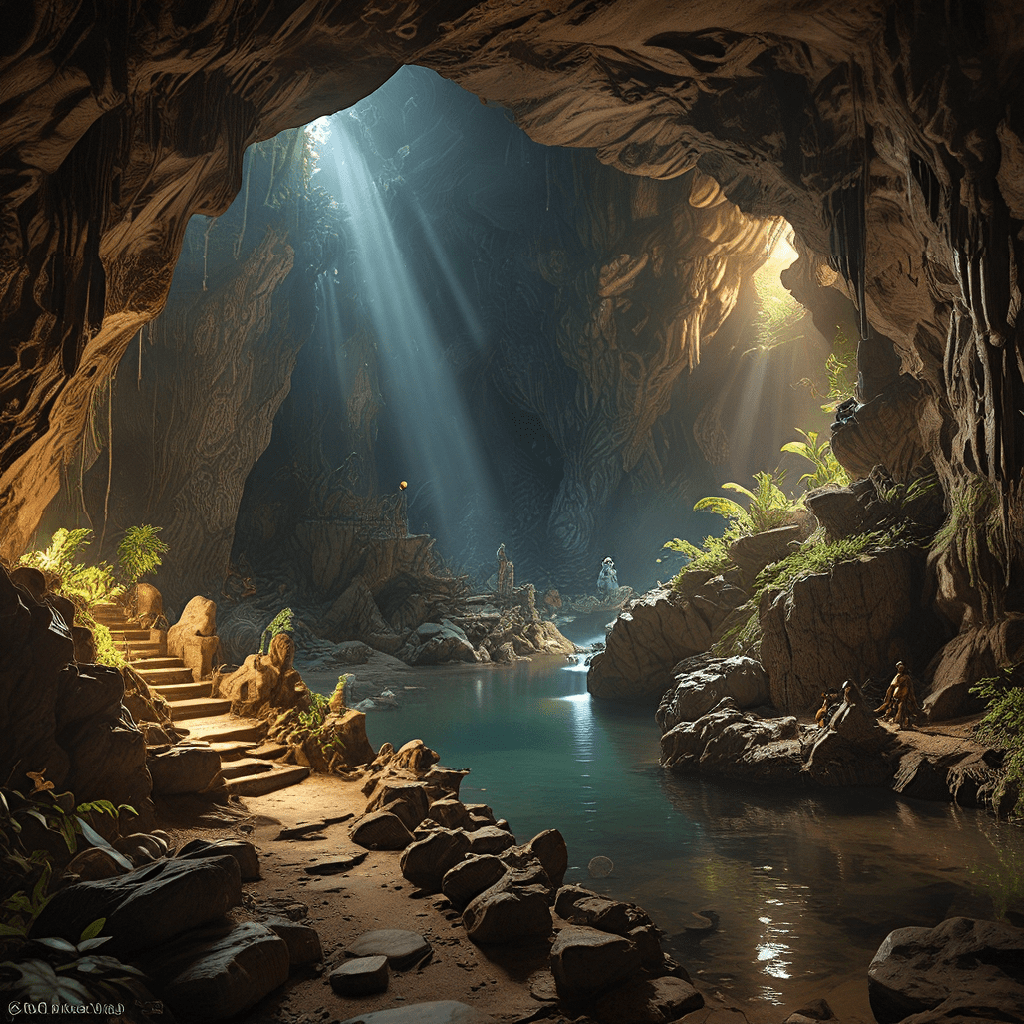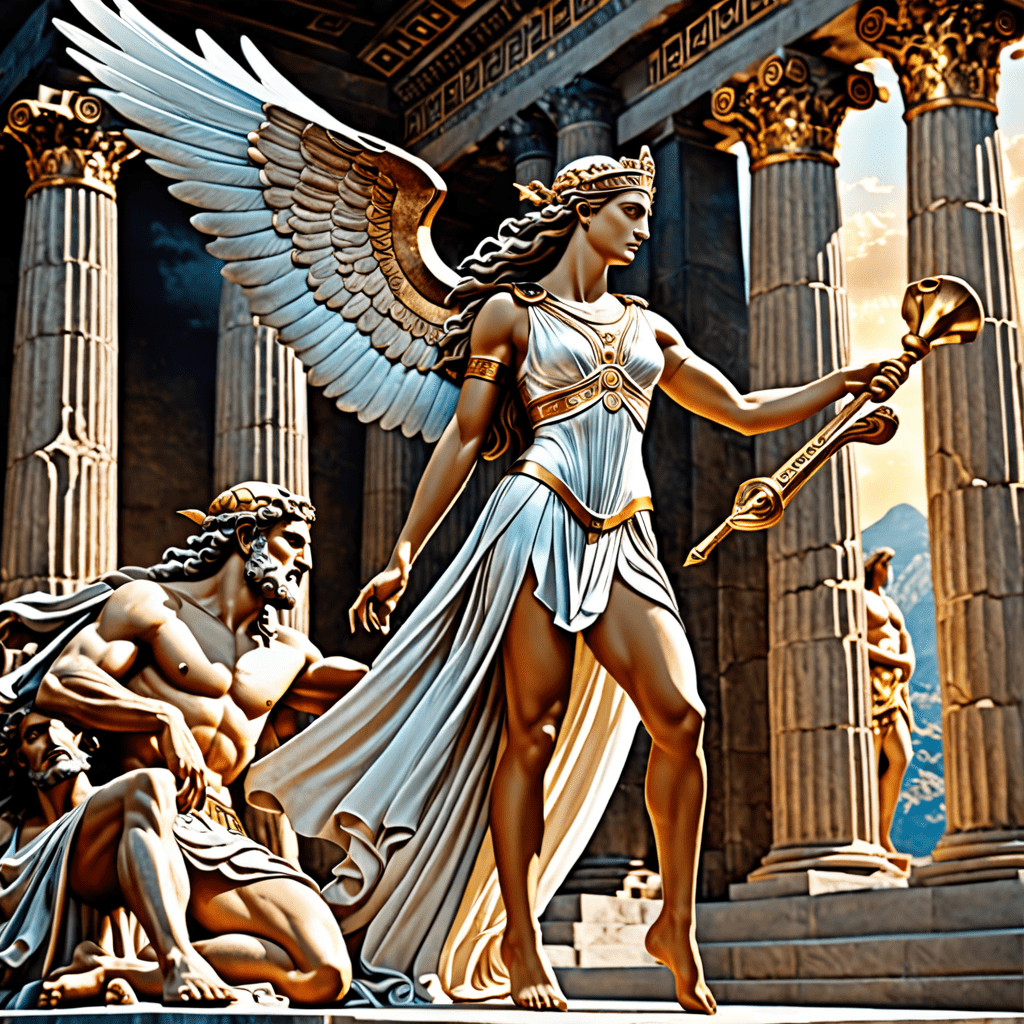The Serpent’s Poetry: Jörmungandr in Norse Poetry and Skaldic Verse
I. Introduction
In the rich tapestry of Norse mythology, few figures are as compelling as Jörmungandr, the Midgard Serpent. This colossal serpent, which encircles the Earth, embodies the chaotic forces of nature and the inevitability of fate. The importance of poetry in preserving these mythological narratives cannot be overstated, as it serves as a vessel for cultural memory and shared identity. This article aims to explore the representation of Jörmungandr within the realms of Norse poetry, particularly in Eddic and Skaldic verse, highlighting his multifaceted character and the themes he embodies.
II. The Mythological Context of Jörmungandr
Jörmungandr’s origins can be traced back to the primordial chaos that existed before the creation of the world. According to Norse cosmology, he is one of the three children of the trickster god Loki and the giantess Angerboda, alongside Fenrir the wolf and Hel, the goddess of the underworld. Jörmungandr’s role in the mythos is significant, as he is prophesied to engage in a cataclysmic battle with Thor during Ragnarok, the end of the world.
Jörmungandr’s relationship with Thor is particularly noteworthy; the two are bound in a cycle of conflict, representing the struggle between order and chaos. As the Midgard Serpent, Jörmungandr symbolizes not only the dangers lurking beneath the surface of the known world but also the interconnectedness of all life. His presence in the seas is a constant reminder of the lurking chaos that underpins existence.
III. Jörmungandr in Eddic Poetry
In the Poetic Edda, Jörmungandr appears in several key poems that highlight his significance in Norse mythology.
A. Analysis of Jörmungandr’s appearances in the Poetic Edda
1. “Völuspá” and the prophecy of Ragnarok
In “Völuspá,” one of the most important poems in the Edda, the seeress foretells the events of Ragnarok, including the fateful encounter between Thor and Jörmungandr. This prophecy underscores the inevitability of fate and the cyclical nature of life and death in Norse belief, where even the gods are not exempt from destiny.
2. “Hárbarðsljóð” and the confrontation with Thor
Another significant mention of Jörmungandr occurs in “Hárbarðsljóð,” where Thor boasts about his strength and past exploits. The poem hints at the tension between Thor and Jörmungandr, emphasizing their roles as adversaries in the grand narrative of creation and destruction.
B. Themes and imagery associated with Jörmungandr in Eddic verse
The imagery surrounding Jörmungandr is rich and evocative, often depicting him as a monstrous figure of chaos. Themes of fate, conflict, and the natural order permeate these verses, reflecting the broader existential questions that define Norse mythology.
IV. The Representation of Jörmungandr in Skaldic Verse
Skaldic poetry, characterized by its complex structure and use of kennings, offers a different lens through which to view Jörmungandr.
A. Characteristics of Skaldic poetry and its significance
Unlike Eddic poetry, which is more straightforward and narrative-driven, Skaldic verse often employs intricate forms and requires a deep understanding of its cultural context. This style allows poets to convey layered meanings and engage with their audience on multiple levels.
B. Notable skalds and their depictions of Jörmungandr
1. Snorri Sturluson and his interpretations
Snorri Sturluson, a 13th-century Icelandic historian, provides a significant interpretation of Jörmungandr in his “Prose Edda.” He elaborates on the serpent’s role in Ragnarok and highlights the symbolic nature of his confrontation with Thor, framing it as a battle between order and chaos.
2. Examples from other skalds
Other skalds, such as Egill Skallagrimsson, also reference Jörmungandr in their works, often using him as a metaphor for challenges and adversities faced by heroes. The serpent serves as a reminder of the ever-present dangers that lie beyond the horizon, lurking in the depths.
C. The poetic devices used to portray Jörmungandr
Skaldic poets frequently employ kennings, alliteration, and metaphors to enhance their descriptions of Jörmungandr. For example, referring to him as the “world-encircler” or “sea serpent” adds layers of meaning and invites the audience to engage with the imagery on a deeper level.
V. Thematic Elements in Jörmungandr’s Poetry
Jörmungandr’s representation in poetry encapsulates various thematic elements that resonate throughout Norse mythology.
A. Nature of chaos and order in Norse cosmology
Jörmungandr embodies the chaos that threatens to overwhelm the ordered world created by the gods. His existence serves as a constant reminder of the balance between these two forces, with Thor representing order and the serpent representing chaos.
B. The interplay between fate and free will
The conflict between Jörmungandr and Thor also illustrates the tension between fate and free will. While the outcome of their battle is predetermined, the choices made by the gods and mortals leading up to that moment remain pivotal.
C. Jörmungandr as a symbol of environmental and existential threats
In a contemporary context, Jörmungandr can be seen as a symbol of environmental dangers and existential threats, reflecting humanity’s struggles against forces that seem insurmountable. The Midgard Serpent’s encirclement of the Earth serves as a metaphor for the interconnectedness of all life and the potential for destruction that lies within our grasp.
VI. Jörmungandr’s Influence on Later Literature and Culture
Jörmungandr’s legacy continues to inspire modern interpretations across various media.
A. Adaptations of Jörmungandr’s character in modern interpretations
From novels to films, Jörmungandr has been reimagined in countless ways, often reflecting contemporary themes of environmentalism and chaos. His character serves as a bridge between ancient mythology and modern storytelling.
B. Jörmungandr’s presence in contemporary fantasy and media
- In popular video games, such as “God of War,” Jörmungandr is depicted as a powerful ally and a complex character.
- In Marvel Comics and films, he appears as a formidable foe, blending traditional elements with modern superhero narratives.
C. The enduring legacy of Norse poetry in shaping cultural narratives
The themes and narratives surrounding Jörmungandr highlight the enduring legacy of Norse poetry, shaping cultural narratives that explore human existence, the natural world, and the eternal struggle between chaos and order.
VII. Comparative Analysis: Jörmungandr and Other Mythical Serpents
When examining Jörmungandr, it is essential to compare him to serpentine figures in other mythologies.
A. Similarities and differences with serpentine figures in other mythologies
Like Jörmungandr, many cultures have serpents that symbolize chaos and destruction. However, the context and significance of these figures can vary widely.
B. Symbolism of serpents across cultures
- In Greek mythology, the serpent often represents wisdom and healing, as seen in the figure of Asclepius.
- In Mesoamerican cultures, serpents can symbolize fertility and water, highlighting their dual nature.
C. The unique aspects of Jörmungandr’s portrayal in Norse tradition
Jörmungandr’s role as both a threat and a necessary part of the cosmic order sets him apart from other mythical serpents. His relationship with Thor and the prophecy of Ragnarok imbue him with a unique significance in Norse cosmology.
VIII. Conclusion
Jörmungandr’s presence in Norse poetry, both in Eddic and Skaldic forms, illustrates the complex interplay of chaos, fate, and the natural world. As a symbol of environmental and existential threats, he remains relevant in contemporary discussions about humanity’s place within the cosmos. Through the lens of poetry, Jörmungandr continues to provoke thought and inspire creativity, ensuring that the ancient narratives of Norse mythology remain alive and impactful in modern culture.



